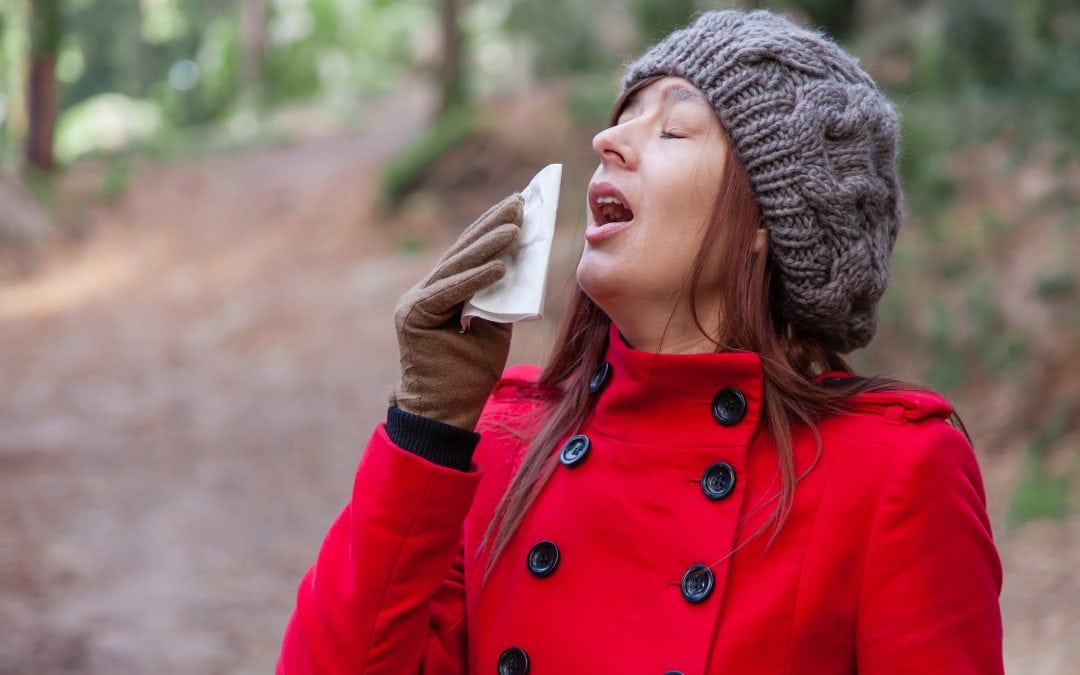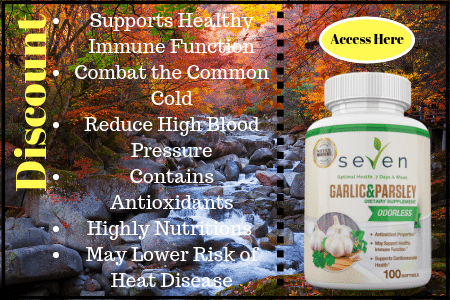Allergies are a common ailment in people around the world. In the United States alone, more than 50 million people suffer from allergies.
Allergic reactions occur when your immune system reacts to a substance – pollen, for example – as if it were an invader. The symptoms of allergies include congestion, sneezing, and hives, among other things.
If it seems to you like allergies are worse in the Fall, you’re not alone – and you’re not imagining it. Here are some of the reasons that your allergies act up in the Fall.
Pollen Counts are High
The first reason that allergies tend to be worse in the Fall is that pollen has been building up all summer. As plants bloom and release pollen, it accumulates on the ground and in the air. In areas that get little summer rain, pollen may linger on the ground an in the air. And, in areas that get a lot of rain, the precipitation may encourage weeds to grow – and they produce pollen, too.
In fact, weeds like goldenrod, sagebrush, and ragweed are some of the most common culprits in hay fever, which affects approximately 60 million people every year.
Mold Grows When Leaves Fall
Another reason that your allergies may get worse as Fall approaches is that mold and mildew often grow and multiply during this season.
For example, as leaves fall from the trees, they accumulate in piles on the ground. If it rains, the leaves trap the moisture and provide a perfect growing environment for mold and mildew.
Inside your home, Fall rain may lead to lingering dampness that encourages mold and mildew as well. If you are one of the millions of Americans who are allergic to mold, the Fall can be an especially challenging time.
You’re Outside a Lot
For many people, Fall is their favorite season. They head outdoors for activities like hiking, hayrides, and apple picking – and that means that they’re also exposing themselves to pollen and mold spores.
You don’t need to stay inside all the time, but it may be worth limiting your exposure to seasonal pollen. One quick fix is to avoid being outside before 10 in the morning. Pollen levels are at their highest in the early morning hours, so if you can avoid it and stay inside, you may be able to minimize your allergy symptoms.
You Track Pollen and Mold Inside
If you’re outside walking around, treading on the grass or through piles of leaves, you are undoubtedly picking up tons of pollen and mold spores along the way. It can end up on your clothes, too.
If you have a mudroom, you can try removing your shoes there instead of bringing them into the house. You may also want to give your dog a quick brush before you head into the house to remove pollen that may have attached itself to the dog’s fur.
Leaving your windows open on windy days can also let pollen inside. You may want to close them or invest in some pollen-filtering screens.
You’re Not Consistent with Your Medication
People who take medication to help manage their allergy symptoms can sometimes be inconsistent taking it. They may take it only when their symptoms are too much to handle – and that can be a problem.
If you are on prescription allergy medication or take OTC medication, your best bet may be to take it even if you don’t feel like your allergies are acting up. Your body may react to an influx of pollen without warning. If you take your medication, you’ll be protected.
Conclusion
Fall allergies can be enough to make anybody miserable. Understanding why and how the season contributes to allergies can help you take common-sense measures to minimize your exposure – and your symptoms.
Do you struggle with HIGH BLOOD PRESSURE? This dietary supplement is packed with vitamins and herbs shown to lower blood pressure NATURALLY>>>
References:
https://acaai.org/news/facts-statistics/allergies
https://acaai.org/allergies/types/hay-fever-rhinitis
http://www.aafa.org/page/mold-allergy.aspx




What did you think about this article?